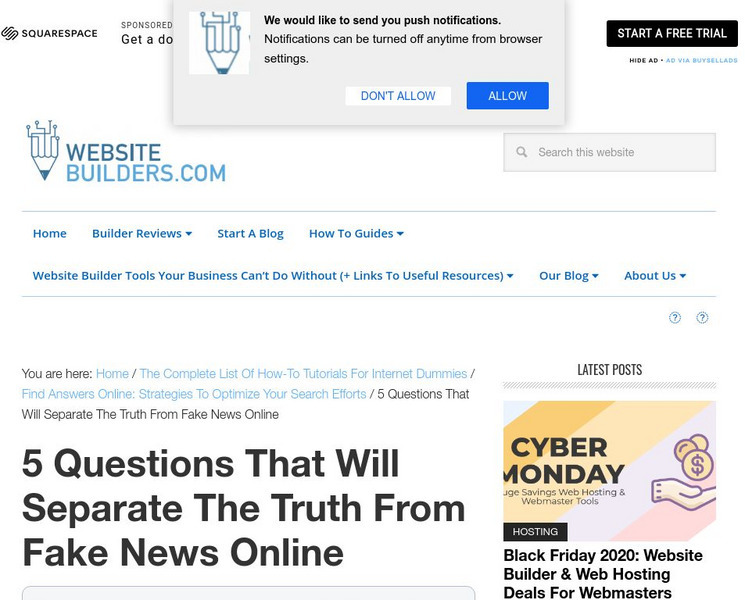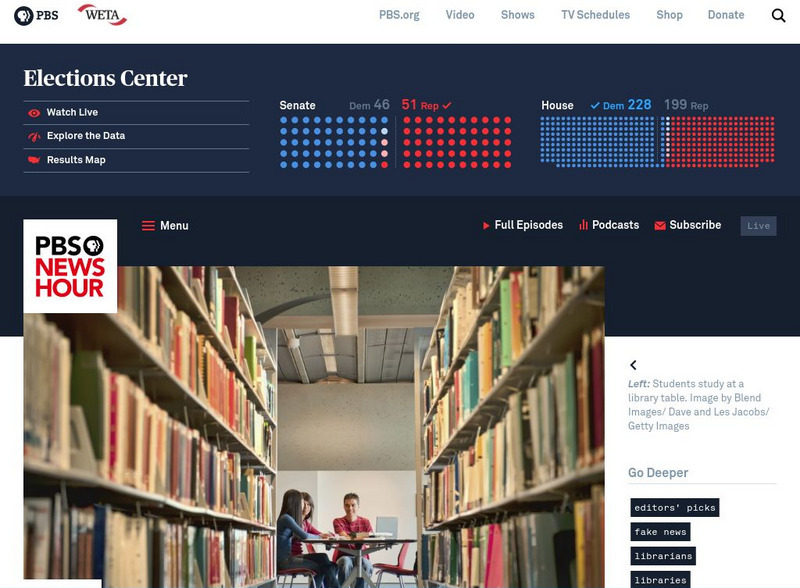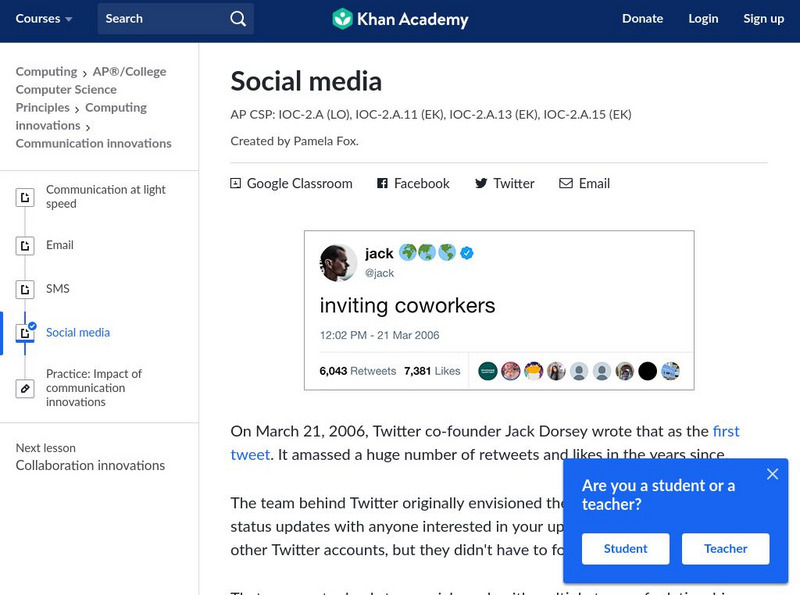PBS
Pbs News Hour: Very Real Consequences of Fake News Stories
Incidents like the #Pizzagate shooting signify one step in a long, dark trail of real world consequences caused by fake news. Experts explain this history and why these stories are so hard to ignore.
New York Times
New York Times: Evaluating Sources in a 'Post Truth' World: Fake News
[Free Registration/Login Required] Need help determining fake news from real news? This seems to be a problem today. Find practical activities and questions to help navigate a media landscape in which it is increasingly difficult to tell...
Media Smarts
Media Smarts: How to Recognize False Content Online: The New 5 Ws [Pdf]
A tip sheet to help both students and adults learn how to test online content for validity.
NPR: National Public Radio
Npr: Five Ways Teachers Are Fighting Fake News
Since a recent Stanford study showed that students at practically all grade levels can't determine fake news from the real stuff, the push to teach media literacy has gained new momentum. This article gives five quality examples of...
PBS
Pbs News Hour: Did Fake News Influence the Outcome of Election 2016?
Don't believe everything that is read on the Internet! So many people around the world follow the news, all news, that they find posted on social media. Some news is real, some news is fake. How much of the fake news might have...
PBS
Pbs Learning Media: Why Is Fake News So Effective?
This activity frames the controversial issues of fake news and trust in the media with the historical context of yellow journalism and sensationalist reporting. Students learn strategies for improving their media literacy and will be...
Arizona State University
Arizona State U.: Research Success for High School Students: Evaluating Sources
A collection of resources for evaluating sources. Topics covered include knowing your sources, assessing whether a source is scholarly, the CRAAP Test (includes chart, worksheet, and website evaluation sheet), and how to identify fake news.
Other
Loyola Marymount University: Evaluating Sources: Using the Radar Framework
The RADAR Framework can help you remember what kinds of questions you should be asking about an information source as you evaluate it for quality and usefulness in your research. The Framework can be downloaded in PDF format. Includes...
Other
Channel One: Lesson Plan: How to Spot Fake News
A lesson plan explores the problem of fake news sites, featuring a Channel One News video about the issue. What are the best approaches to decoding the real from the fake?
NPR: National Public Radio
Npr: Fake or Real? How to Self Check the News and Get the Facts
Read a story on Facebook. Read the headline and think it's too good to be true, but it looks like it's from a news site. Experts offer tips to help sniff out fact from fake. One of today's greatest challenges in a media bombarded culture.
Other
Learn the net.com: Evaluating Online Information: Fact or Fiction
How can you determine if online information is fact or fiction? Use this online article to become more computer literate in this topic. Includes a video.
PBS
Pbs News Hour: Column: Can Librarians Help Solve the Fake News Problem?
Was it only a matter of time that people would begin buying into any news, even when it was actually fake? This writer felt it was no surprise. Find out why and how a librarian can help educate students how to best vet resources for...
TED Talks
Ted: Ted Ed: How to Choose Your News
Damon Brown gives the inside scoop on how the opinions and facts (and sometimes non-facts) make their way into the news and how the smart reader can tell them apart. [4:48]
TED Talks
Ted: Ted Ed: How False News Can Spread
In previous decades, most news with global reach came from several major newspapers and networks with the resources to gather information directly. The speed with which information spreads now, however, has created the ideal conditions...
Other
Central Michigan University: Website Research: Fake News
Critical appraisal tests like CRAAP and RADAR can also be used to evaluate the credibility of news websites and the stories they produce (which often go viral on social media). Here are some more resources to help you check! (CRAAP...
Other
Pro Quest Guided Research Worksheet: How to Identify Fake News in 10 Steps [Pdf]
A checklist to use for assessing whether a resource is fake news or not. Students select "Yes" or "No" to various questions. The more thumbs-down icons, the more likely the news article is fake.
Childnet
Childnet: Online Safety: Secondary: Ages 11 18
Welcome to the Childnet Hub for young people aged 11-18. Choose a topic from the list of 20 for more information and help and advice about online safety and usage. It includes cyberbullying, gaming, fake news, live-streaming, phishing...
Childnet
Childnet: Online Safety: Fake News
Fake news most often describes inaccurate or false information spread online by either news services or via social media. However, the phrase is sometimes used in other ways such as to describe anything thought to be false, misleading or...
Childnet
Childnet: Online Safety Activities You Can Do From Home
During remote learning, young people will be spending more time at home than usual -- with their families, and on devices. We have put together a list of resources that you can use with them, to explore online safety in a fun, engaging,...
Thinkport Education
Thinkport: Assessing an Author's Claims
Learn how to evaluate resoruces and author's claims.















